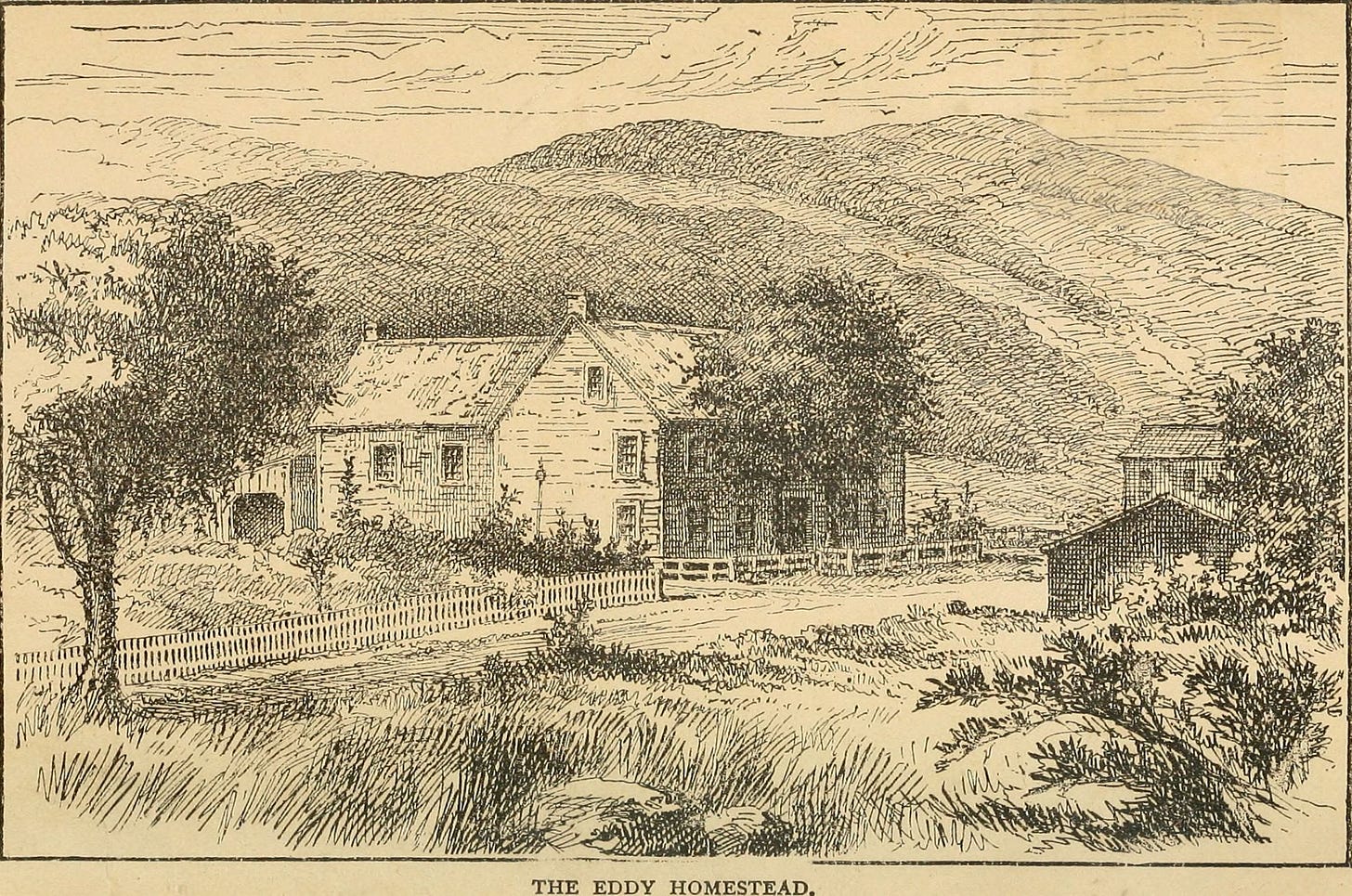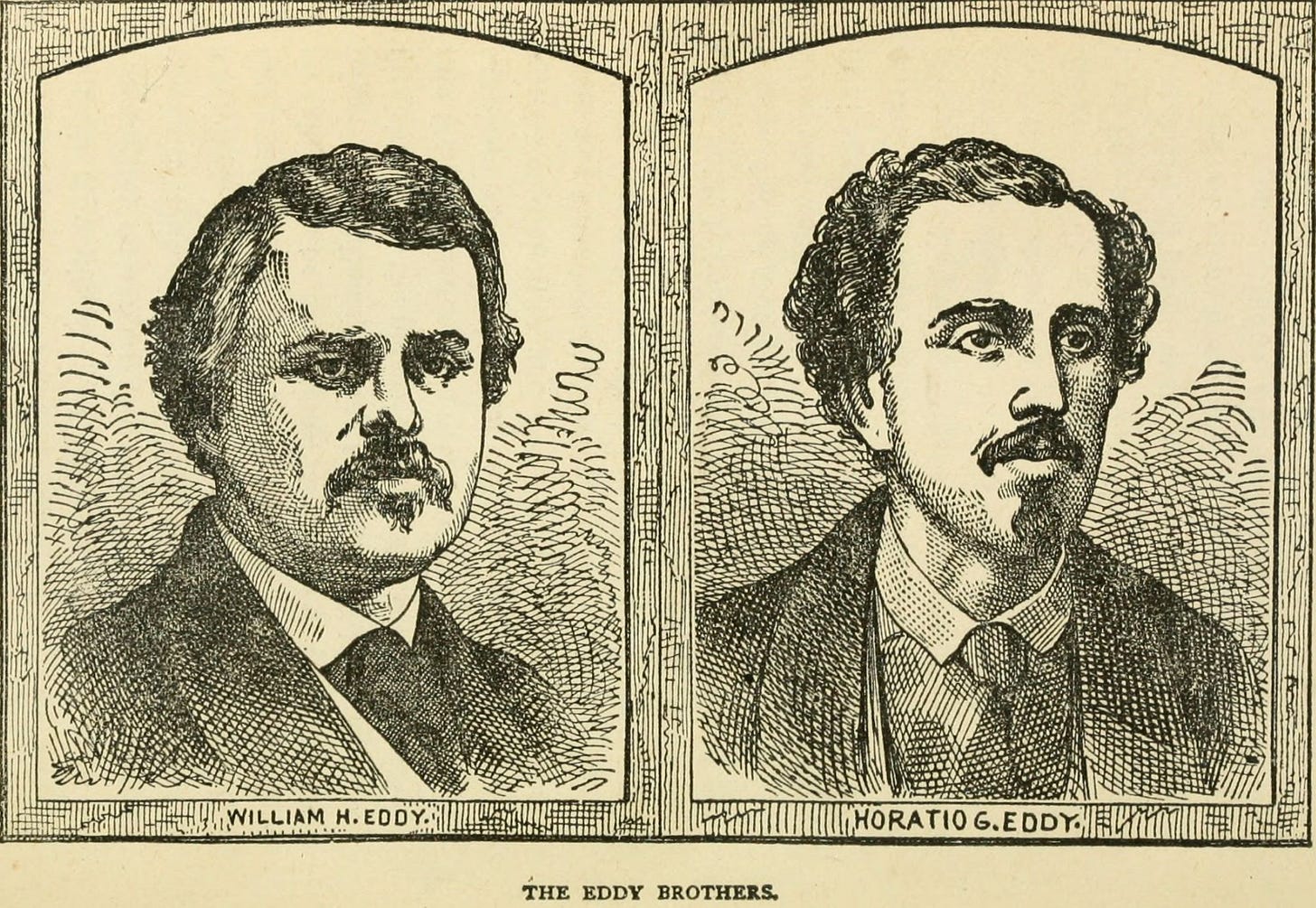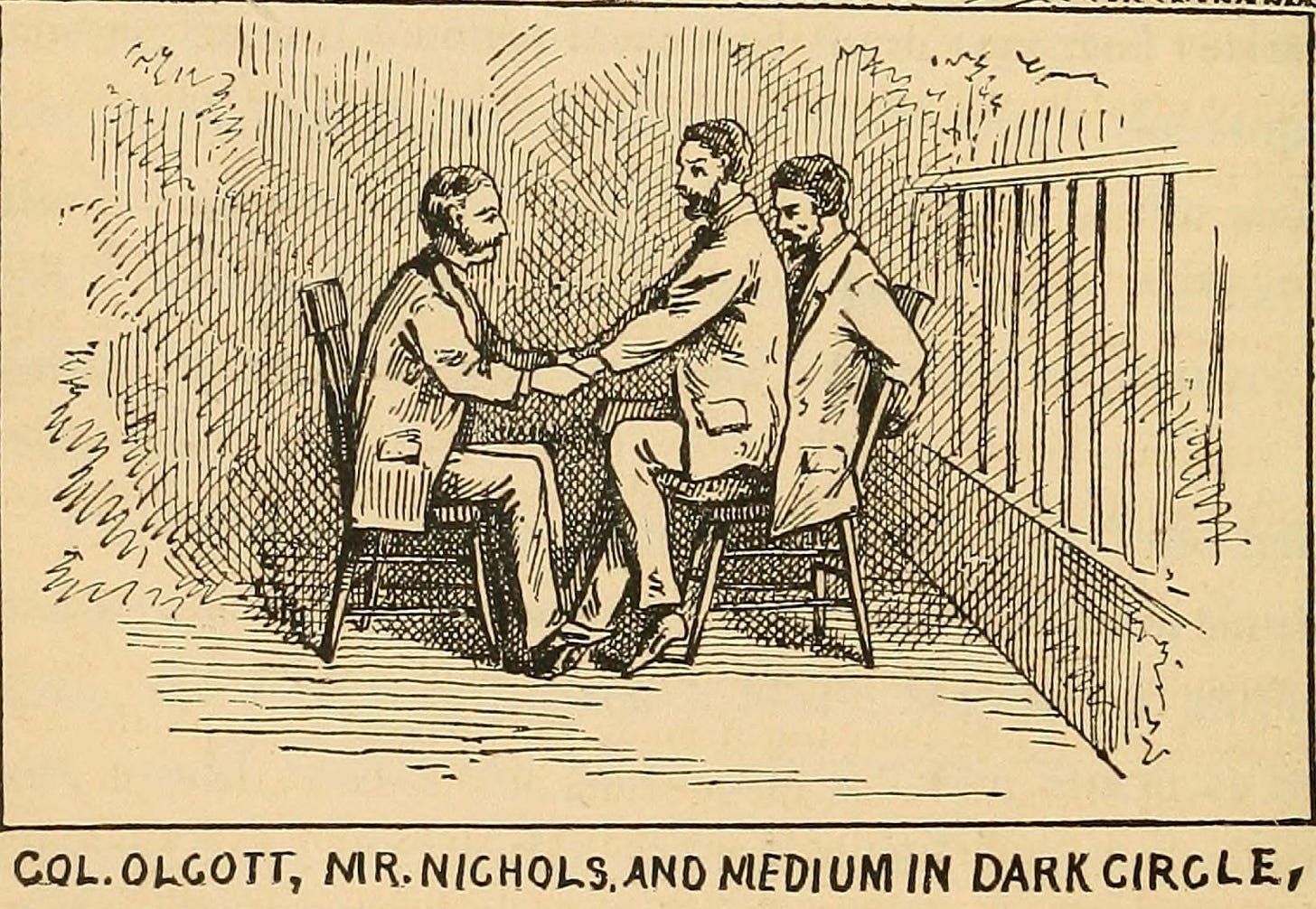Happy Halloween! Here’s a little treat for you all to experience what it was like during a 19th century spiritualist seance/performance, which were full of all kinds of tricks. But those are for another day, and today you get to see what it was like sitting in the audience of one such Victorian-era performance.
Darkness comes early in October and its winds rattled the clapboards of the Eddy Homestead, a soggy carriage ride out past the tiny hamlet of Chittenden, Vermont.
Mists obscure the browning trees of the surrounding hills as you arrive early for that evening’s circle. Other visitors for the night regale the newcomers with stories of what they have already experienced from their previous circles. Rappings. Objects moving on their own. Prophecies. Strange languages being spoken. People levitating. Mysterious hands appearing out of nowhere. Instruments playing on their own. Automatic writing. And the most intriguing aspect phantom people materializing before you and interacting with you.
The crowd is an ecclectic one. A mix of ladies and men, editors from newspapers, lawyers, inventors, architects, farmers, peddlers, long-haired men and short-haired women. Some just make the trip out for the evening performance, while others have been coming for a week or more.
There are 25 of you in total waiting for the performance of the Eddy brothers, William and Horatio. Six days a week they hold their circles, every evening but Sunday.
Around 7pm, the time has come to be ushered up to the second floor “circle room”. Built and opened earlier in the year just for this purpose. Your eyes take a good long while to adjust to the darkness if they ever really do. A lone kerosene lamp spurts out the only illumination in the large, mirky room.
The paying guests file into two rows of benches stationed in front of a raised platform. Someone whispers to you that the door on the platform is the closet where William, the medium sits during the circle, and where the materialized spirit-beings make their appearance.
A hush ensues as William makes his way to the platform and enters the closet. A curtain is strung across the door. Soft music plays as you wait for something to happen.
Not too long after, a voice of a woman can be heard coming from behind the curtain. A thick New England accent talking all manner of things, hard for you to get a handle on before it fades away.
The curtain stirs and a Native American woman appears. She paces the platform. Talking haultingly. Her name is Honto. She looks young and lithe dressed in a dark skirt with a light polonaise style overdress. From somewhere or from thin air she pulls out a long gauzy, transparent shawl to show the audience.
Someone from the crowd calls out for someone to feel her heart. A woman walks up to Honto as she opens her dress and the lady places a hand upon her breast. She relates back to the crowd that Honto’s skin feels cold, moist, but she could feel a feeble but rhythmic heartbeat.
Then she just disappears maybe into the curtain and the closet beyond or maybe into the platform.
Moments later another Native American woman form materialized from behind the curtain. She calls herself Bright Star and is shapely and tall wearing dark clothing trimmed with a band of phosphorescent beads. Then, after a few minutes she too disappears behind the curtain followed by yet another Native American woman, “Daybreak”, who dances to a violin tune before passing back into the cabinet. A couple of Native American men next appear, the most impressive being “Santum”, tall and regal looking in a buckskin hunting shirt and a powder horn slung across his chest.
Then comes a parade of several white men. Locals. Some recently dead. Some long dead. They are all hard to see. The darkness obscuring details, but the broadstrokes of their countenance can be discerned.
A German music teacher in the audience, accompanied by his wife, was asked to play the flute. As he plays the last apparitions appear. The curtain parts to reveal two children standing there. Both girls. One twelve and the other barely a year old. The wife gasps and calls out are those are her children who she has lost to childhood diseases. Three affirmative raps resound around the room.
You get called to check on William. With lamp in hand you step upon the stage and peer behind the curtain and see it completely empty. You open the door to the closet. Raise up the lamp. There at the back sits William deep in sleep. You rouse him. Startled he opens his eyes and the dark circle comes to an end.
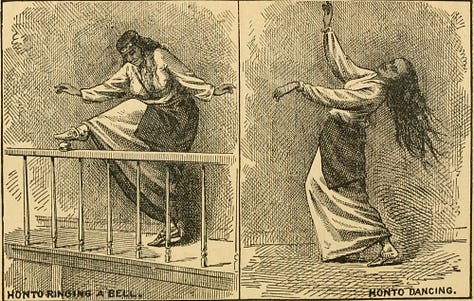
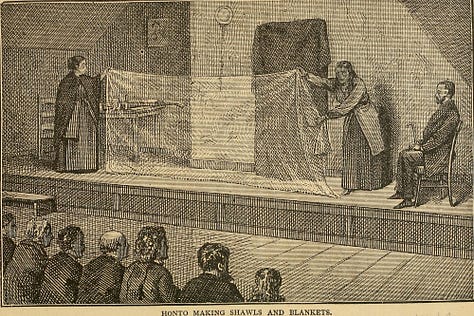
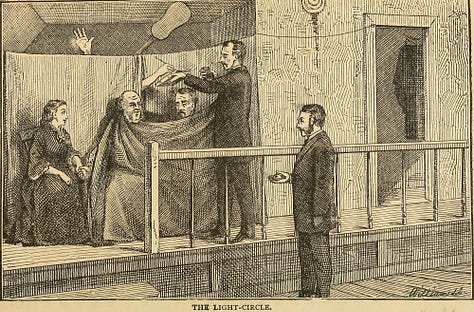
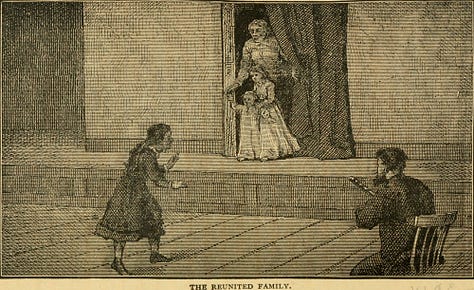
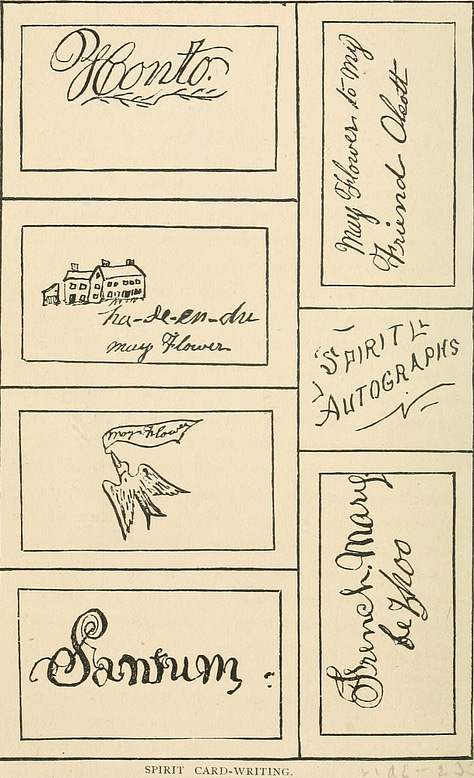

Preparations begin for the light circle. William’s brother Horatio mounts the platform. He pulls forward a table placing a number of instruments on it before hanging two shawls stretching from the wall to the cabinet creating a screen with a two foot gap at the top and a three foot gap at the bottom.
Horatio sits in a chair. A man from the audience is chosen to sit beside of him. A woman is chosen to sit beside of the man. William hangs a shawl on the breast of the two men creating another screen with their heads poking out of the top. The three hold hands. A kerosene lamp is place near them and turned on high.
That’s when the commotion starts. Instruments start to play and hovering above and below the curtain. Slowly they noise comes together to play a discernible song.
A tiny hand from a child slides through the shawls and begins to run all over the lady’s face. She begins to cry. The little hand wipes away her tears and smooths her hair.
Horatio calls out for writing materials. Spirit hands poke out grabbing the pens. Writing names. Some names of the deceased. Some names from the spirits you saw earlier in the night. And some are unknown. The cards are flung. One lands in your lap. You look down and read the name Santum.
The clatter recedes. Silence slides over the circle room. Lights rise and that night’s circle comes to a close.
The information is gathered from Henry Steel Olcott’s 1874 book People from the Other World. It’s not a bad read as most 19th century books go. I was drawn to it because it is in Chittenden and in the Eddy’s house where history of a different sort would be made. There Olcott would first meet Helena Petrovna Blavatsky.
Through his investigations into the Eddys which were being published by the New York Sun and People from the Other World, Olcott would introduce Blavatsky to America. And she comes off as a fucking badass rockstar. He helped to bring public awareness to Blavatsky starting her down the road to becoming a new kind of alternative spiritual messiah. The two would go on to co-found the Theosophical Society and the rest is history.
I have a little skin in this game, because I cover Blavatsky, Olcott, and the Theosophical Society in my upcoming book Lemuria: A True Story of a Fake Place out in January from Feral House.




